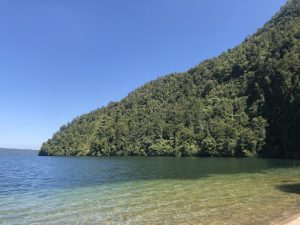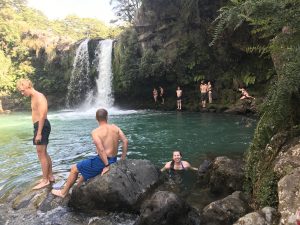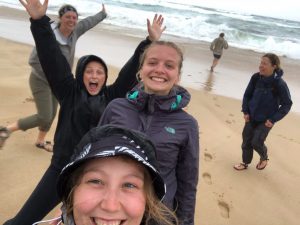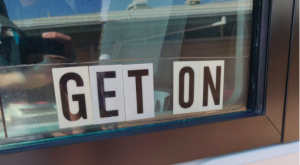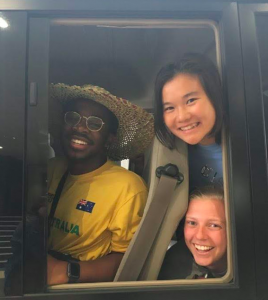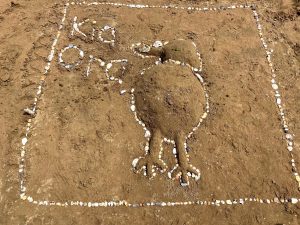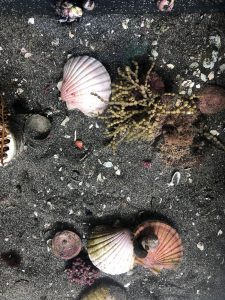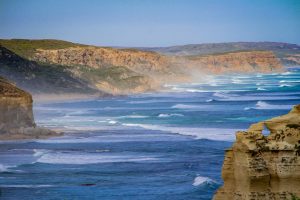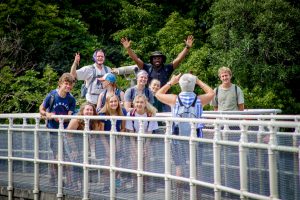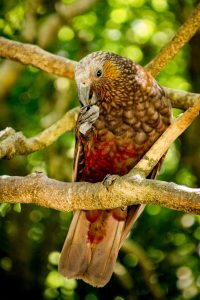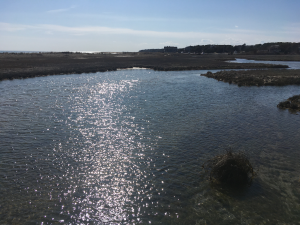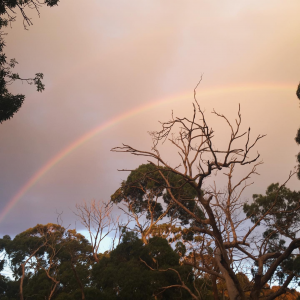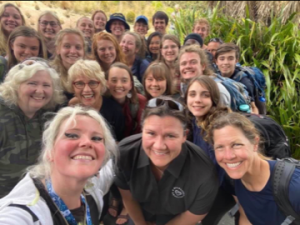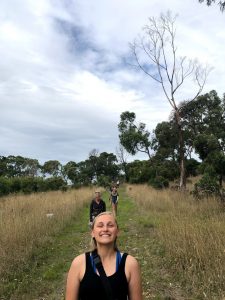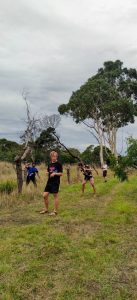It has been over a month since I have seen everyone and it has not been easy. Zooming with everyone just isn’t the same as sitting down for group dinners or being on the bus for 5 hours. I have been reflecting a lot on the lectures and educational experiences I had during the 7 weeks. While grateful for all the I learned, what truly changed me and helped me accept who I am were the 21 other people I was with. People who turned into friends as quickly as ice cream turns into melted ice cream on a hot day in the southern hemisphere.
I remember the first time I met everyone, it was cloudy and cold out, we were in Tomson, jammed into a room, and forced to talk to one another. We played a game where you tried to find 3 things in common that you had with your partner the fastest. I was with Abby (Becker) we lost. By the time (I think Laura and Emily, maybe) found 3 we barely found 1. I remember leaving that three-hour orientation more excited than I have ever been for an opportunity. I didn’t know anyone’s name except for Abby and Marcel, I also knew Grants name, but that is only because he didn’t make the meeting and people kept repeating it. Little did I know that everyone in that room was going to change my life.
My first vivid memory was when Meg asked me to switch seats with her so she could sit next to Anna. That meant I got to sit next to Marcel. I sat next to Marcel for 16 hours and I can’t imagine what I would’ve done if I didn’t. The whole way he was smiling, laughing, potentially drammed out sleeping, or dealing with me having to get up to pee for the 10th time. When we arrived in Aukland I remember Hannah going through customs without anyone else. After an hour-long customs wait we sat outside absolutely dumbfounded we were there, except for YiWynn who was already tan and looked well-rested. We couldn’t believe we made it. Exhausted and disgusting, but we were there.
When we got to the hostel we all stuffed our things into a little room ready to take on the day, then we looked at our phones thinking it was at least 10 in the morning, no, it was 8, 8 am. We took off for the day after showering to follow Jan and Susie around. I still don’t think at this point I knew everyone’s name. I spent most of my day trying to figure out why everything was so expensive until I realized there was a conversion rate. Wow, did I feel stupid. I remember it was the day of the SuperBowl. Alex kept saying “I am getting my base sunburn, ya know?” Sean and Ivy just wanted to swim and Abigal ate her first kiwi in kiwi land.
By the end of the day, we knew a little bit more about each other. Like I learned that Justin hasn’t swam in the ocean, a crazy amount of people wanted to hurl themselves off a bridge with ropes tied around their feet (especially Emily), we really love lollies, Sean is allergic to just about anything fresh, and Ivy really really loves whales. For dinner, we sat around tables at a sub-par fish and chips place sharing laughs and stories. The next day it was blazing hot and we spent our day singing. I learned that Rachel has about 100000 talents and signing is just one of them. I also found out that Justin has the voice of an angel. I did my first Tim-Tam slam with YiWynn and Rachel. I learned that Alex and Meg love trees, like really LOVE trees. By the end of the day, it was no surprise that everyone wanted to go to the beach. It is also crazy how small a place can be, I am pretty sure I ran into Carolyn and Matt everywhere I went. Alex, Abby, and I strolled around Aukland hoping we wouldn’t get lost.
Flash forward to Mt. Cook. Snow-capped peaks crowded around us. For me, I felt like I was home. Not just because of the mountains, but also because of the people. We were all sitting outside watching the sunset, Grant, Sam and Justin were playing rugby, a common theme of the trip. Just before that, I had dinner with Abby, Emily, Laura, and Ivy. Sean, YiWynn, and Hannah were still gone, classic. Alex had set up a few blankets as more and more of us began to crowd in, Natalie and Laura’s contagious laughs were taking over the mountain valley, I was looking at Anna and Meg’s journals envious of their artistic abilities, Matt was cracking jokes (even if we didn’t hear all of them), and Marcel and I were showing off our scuba hoods. And that’s when we took one of my favorite pictures from the trip. As I left for my 9:30 bedtime, Sam begged me for a hug, like he did every night.
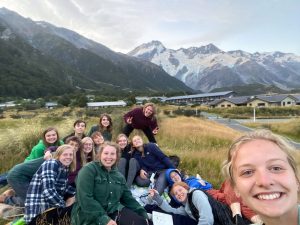
The next day we were off on a hike to a glacial lake, I for obvious reasons of being me, took off sprinting at first with David and Justin, but soon David trickled back to be with Michon #couplegoals. Justin and I made it to the lake first. We sat there talking, as we always do waiting for everyone else. Once everyone else got there I was somehow surprised when Marcel and Ivy decided to jump into the frozen lake and were soon followed by Grant and Sean. I got the pleasure to walk back with Justin and Carolyn, two of my neighbors, we talked about home and what we were most looking forward to…
A month or so later we were in Australia, it was our last week, the point when I felt like I was finally opening up. I could talk to anyone and enjoy myself completely. Most conversations took us to wild places of favorite animals (given that any type of Marsupial was many people’s favorite), politics, and most importantly the Bachelor or Love is Blind. I learned a lot about everyone and was excited that I got a good response rate on my poll of “do you still want to be friends with me after we leave?” It is special to have a group of people that wants to change the world and will do anything necessary to do so. It is rare to have a group so selfless and open, but we had that. It is a blessing to have 21 new friends that will always be there for you. Through random selfies, necessary daily ice cream runs, beach days, smiling faces, wanderlust, happiness and sadness, and no judgment I learned how important it is to be happy with where you are because you do not know when situations will change. Everyone on this trip impacted me beyond words, and will hopefully continue to impact me, I mean 100% of people said that they will still be my friend. So for that, I want to thank St. Olaf for bringing us all together and giving me lifetime memories that have changed who I am.
-Rose
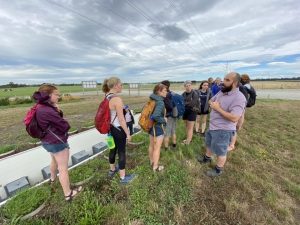 While at the research center we were given a lecture on the research being done, and then were taken out on a tour of the fields. For example, the researchers had found that the ideal ratio of pasture is 80% perennial ryegrass and 20% white clover. This ratio both gives the cows the nutrients that are needed while also fixating large amounts of nitrogen. They also taught us about some interesting ideas that did not work out so well, such as having a plastic sheet that is attached to the underside of the cows in order to spray their pee and decrease the concentration of nitrogen in their urine patches. They also discussed with us how dairy farmers are expected to reduce nitrogen output and how this will be regulated. After this busy day at the research center, we had a discussion on the bus ride back to the hostel about our thoughts on the dairy industry.
While at the research center we were given a lecture on the research being done, and then were taken out on a tour of the fields. For example, the researchers had found that the ideal ratio of pasture is 80% perennial ryegrass and 20% white clover. This ratio both gives the cows the nutrients that are needed while also fixating large amounts of nitrogen. They also taught us about some interesting ideas that did not work out so well, such as having a plastic sheet that is attached to the underside of the cows in order to spray their pee and decrease the concentration of nitrogen in their urine patches. They also discussed with us how dairy farmers are expected to reduce nitrogen output and how this will be regulated. After this busy day at the research center, we had a discussion on the bus ride back to the hostel about our thoughts on the dairy industry. 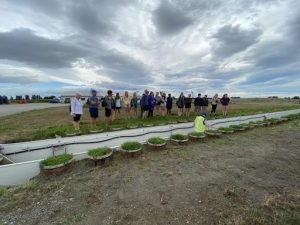 What made this day so important for me is that it encouraged me to think more deeply about what I considered to be a simple and straightforward industry. It has encouraged me to think deeper about environmental problems, and how compromises sometimes have to be made in order to satisfy profit goals or allow people to keep their jobs. Overall, I have learned how environmental issues might be more complicated than they first look.
What made this day so important for me is that it encouraged me to think more deeply about what I considered to be a simple and straightforward industry. It has encouraged me to think deeper about environmental problems, and how compromises sometimes have to be made in order to satisfy profit goals or allow people to keep their jobs. Overall, I have learned how environmental issues might be more complicated than they first look.